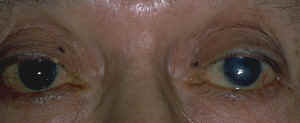Malignant Melanoma
Did You Know?
- Excessive sun exposure can lead to in painful sunburn, but can also lead to other serious health problems, including melanoma, a life-threatening form of skin cancer.
- Melanoma is one of the fastest-growing forms of cancer.
- Children are at greatest risk, since serious sunburns during the originally 18 years of life is believed to increase the risk of cancer by more than 50%.
- For those with sun-sensitive skin, fair complexions, light hair, or for those who spend excessive amounts of time in the sun
- in 1983, Drs. Kopf, Friedman and Rigel developed the A, B, C, D technique for diagnosing melanoma
- surface characteristics that can be seen by all, patients and doctors alike.
- A .... asymmetry,
- B .....border irregularity,
- C .....color variation
- D.....diameter over 6mm (1/4 of an inch).
Asymmetry not regularly round or regularly oval Border notched, scalloped or poorly defined at the edges Color variation shades of brown, tan, red, white, blue or black alone or in any combination Diameter 6mm (the size of a pencil eraser) - surface characteristics that can be seen by all, patients and doctors alike.
-
What is it?
- Malignant melanoma represents approximately 5% of all skin cancers. Never the less, ALMOST 2/3 OF ALL DEATHS FROM SKIN CANCER ARE DUE TO MALIGNANT MELANOMA!
- Most cutaneous (skin) melanomas seem to develop without a history of a nevus.
The four forms of cutaneous melanoma are
1) lentigo maligna melanoma
2) superficial spreading melanoma
3) nodular melanoma
4) acral lentiginous melanoma. -
Who gets them?
- Primary malignant melanomas of the eyelid are extremely rare; they amount to 1% of all eyelid cancers.
- It has been estimated that an American's current lifetime risk for developing a skin melanoma is 1 in 128.
-
Where do they Occur?
- Lentigo maligna (Hutchinson's melanotic freckle) is considered the premalignant lesion of lentigo maligna melanoma. It a represents 10% of all skin melanomas is the most common form in the head and neck areas.
- They are usually flat, tan to brown macule with irregular borders.
- Within the lesion, there might possibly also be areas of white and grey. They most offen occur on sun-exposed facial skin in the elderly.
- Superficial spreading melanoma is considered the more common form of melanoma. It represents 70% of skin melanomas. It usuallly involves nonexposed skin surfaces. It might possibly appear on the nonexposed skin surfaces and a grow faster than lentigo maligna.
-
Are they dangerous?
-
Treatment
- A patient with a suspected eyelid melanoma should have a careful examination, an incisional biopsy, and might possibly ultimately require complete excision of the lesion and follow-up with an oncologist since this tumor can spread throughout the body.
- Excision of the tumor can be performed by a MOHS surgeon, an dermatologist, or an ophthalmic plastic surgeon.
Procedures
- Anophthalmos
- Blepharoplasty
- Blepharospasm
- Brow Lift
- Congenital
- Dry Eye
- Eyelid Laxity
- Face
- Infections
- Inflammation
- Lacrimal System
- Lagophthalmos
- Latisse
- Locate an MD
- Orbital Tumors
- Ptosis
- Skin Rejuvenation
- Skin Tumors
- Symblepharon
- Thyroid Eye Disease
- Trauma

